30 April: Home learning
Hope everyone is ok and staying safe at home. Don’t forget to have a look at the class news page to see some of the learning and photos we’ve been sent.
Here are some ideas for a daily physical and mindfulness activity for you to try.
Physical activity: The Davies Sports 60 Second Personal Challenge is a weekly challenge you can set yourself to help improve your fitness. These challenges only take 60 seconds to complete and require little-to-no equipment. Each day of the week complete the challenge, note down how many you can do and try to beat your score the next day. At the end of the week, track your scores to see how well you have done.
Mindfulness activity: Why not turn your daily walk in a mindful walk focusing on all your senses to notice as many new things as possible – sounds, patterns, colours, textures.
Here are your new learning tasks for today.
Task 1 reading
Firstly, here are the answers to the questions from yesterday.
2. What is the title of the song? The Funny Tummy Song
3. How many verses are there in the song? three
4.Find and copy a word that means a.unsure worried b.on your own alone c.upset sad
5.Find two sets of rhyming words from the song. alone and phone, uh-oh and know, dad and sad, must and trust, OK and away
6.Which part of the song is repeated? ‘They’ll help to make it go away’ is repeated twice at the end of the song and ‘If it makes you feel funny in your tummy’ is repeated at the start of verse two and verse three.
Today’s learning
Today, 30th April, is somebody’s very special birthday who you may have heard about in the news. Captain Tom Moore is 100 years old.
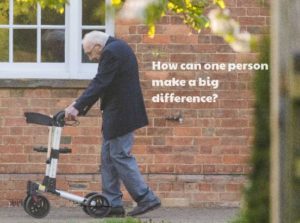
1.Read the First News article of his amazing fundraising achievement (story number 3 – Moore and more and more money raised!).
2.Answer the questions (that follow the text).
Challenge: This story is just one of the many positive stories about how people can make a difference at this time. Can you think of any other examples? For example, a friend of mine has made 1,300 plastic visors to give to hospitals and care homes.
Task 2 maths
Yesterday’s challenge answer is below.
Tomorrow will be your times table test so spend sometime, if possible, on Times Tables Rock Stars today.
Today’s learning
We’re beginning some new learning about measuring length and height starting with using cm. These are the objectives, related to measurement, that the children should be aiming to achieve by the end of Year 2.
- choose and use appropriate standard units to estimate and measure length/height in any direction (m/cm); mass (kg/g);
temperature (°C); capacity (litres/ml) to the nearest appropriate unit, using rulers, scales, thermometers and measuring vessels - compare and order lengths, mass, volume/capacity and record the results using >, < and =
1.Start your maths learning by playing this Topmarks measuring in cm game.
2. Complete the White Rose lesson and activity sheet – Summer Term Week 1 lesson 3 and check your answers.
Challenge: Find some objects at home that are < 10cm and > 10cm. How can you check?
Task 3: Geography
Today, we are going to recap some learning from our earlier geography topic, Where in the world am I?
I can devise a simple map, using and constructing basic symbols in a key.
1. Draw a map of your local area, maybe this could show the route of a walk you’ve been on while you have been at home. Think about the main features you want to show on your map. This might include landmarks such as trees, a park, shops, roads, a church or traffic lights. If you can’t go out walking at the moment, maybe your map could be of school or around your house?
2.It is hard to put lots of information on maps that can easily be read. Therefore maps often have symbols to show important features. The map would have a key to help you read it showing what your symbols mean. Include a key on your map. Here’s some example maps from our learning earlier in the year.
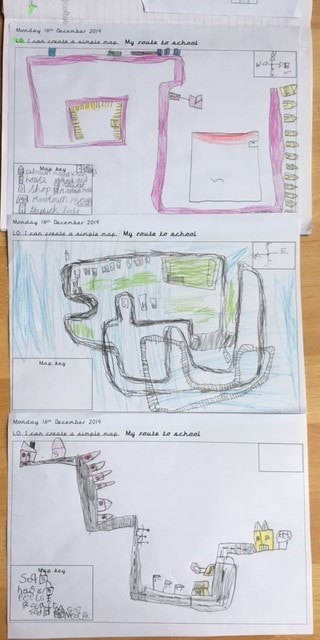
3. Finally, give your map a title.
Challenge: Can you remember the four points of the compass from our previous learning (and a rhyme to help to remember them)? Have a go at one of these compass direction challenges.
Optional extra activity
Finally, we’ve seen how many of you are doing some cooking and baking while you are at home so todays’ alternative activity is to practise one of the cutting skills we learn at school, the bridge hold. Watch this video to remind yourself and then demonstrate this method to an adult at home.
29 April: Home learning
Hello everyone – it’s already the middle of the week. Hope you managed ok with yesterday’s learning.
Firstly, we wanted to share a query that was sent to us from a parent about writing. What if your child is engaging with the tasks but is reluctant to record the answers or the discussion that you have together? Some ideas for this might include:
- alternate the written recording between you and your child (if you have the available time)
- let them type out their responses using a computer (if available)
- keep some of the tasks as discussions and don’t record the answers
- encourage some written recording to send to us (carolinetaylor@spherefederation.org and jackiefreeman@spherefederation.org)
We hope this helps and please do get in touch if needed.
Here are your suggested daily physical and mindfulness activities for you to try.
Physical activity: Today, we wanted to remind you of the short videos available on #ThisisPE. Produced by Yorkshire Sport Foundation these activities are designed to support parents and carers to teach some PE at home.
Mindfulness activity: This week, our Living and Learning statement is, I recognise mental health is important. Listen to the reading of the Kindness book and consider the importance of being kind to each other. How can being kind help your mental health and the mental health of others around you?
Here are your new learning tasks for today.
Task 1 reading
1.Read The Funny Tummy Song below (linked to task 3 Staying safe online)

2. What is the title of the song?
3. How many verses are there in the song?
4.Find and copy a word that means
a.unsure
b.on your own
c.upset
5.Find two sets of rhyming words from the song.
6.Which part of the song is repeated?
Challenge: You will hear the song as part of task 3. When you’ve heard the song, how does it sound different when it is sung compared to reading it?
Task 2 maths
Yesterday’s challenge answer is below.

We are going to have a break from learning about fractions. If you would like to continue this learning at home, please carry on the White Rose lessons. We will start new maths learning, all about measuring length, on Thursday.
Today, we will revise learning about money. These are the objectives, related to money, that the children should be aiming to achieve by the end of Year 2.
- recognise and use symbols for pounds (£) and pence (p); combine amounts to make a particular value
- find different combinations of coins that equal the same amounts of money
- solve simple problems in a practical context involving addition and subtraction of money of the same unit, including giving change
Start your maths learning by playing this Topmarks coins game.
1. Complete this BBC Bitesize lesson about recognising coins.
2.Use any available coins/notes at home to support this learning.
Challenge:
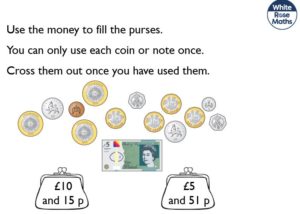
Task 3: Staying safe online
Think back to The Funny Tummy song from task 1.
1. Complete Activity 1 and 2 based on Jessie and Friends, Episode 2 from the Thinkuknow website.
Sharing Pictures
Here we meet Mo and Tia, who together with Jessie complete the friendship trio. At Tia’s birthday party they use Tia’s older brother Kyle’s mobile to take fun photos of themselves. The trio agree to send their photos to Tia’s nan but also a few other people whose numbers are saved in Kyle’s phone. When the photos are shared with other children at their school without their permission, they turn to their teacher for help. The three friends learn about how images can get shared more widely than you first expect, and the importance of consent.
Challenge: What would you do if you were Jessie?
Optional extra activity
Learning sign language is a great skill to have. Here are the actions to match The Funny Tummy Song. Why not give them a go?
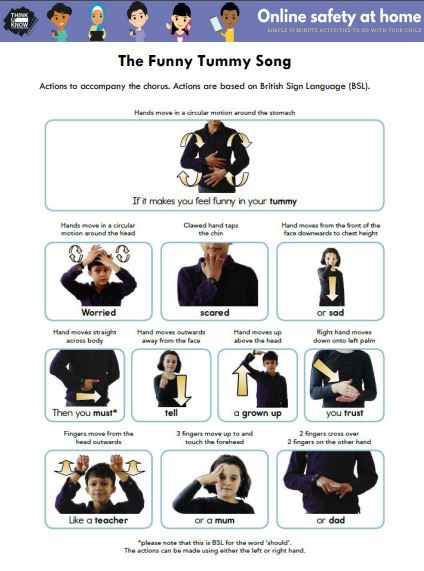
28 April: Home learning
We hope you’ve had your breakfast and you are ready for today’s learning.
Here are your daily physical and mindfulness activities for you to try.
Physical activity: Today’s skills are based around cricket (although these skills could be also used in other games). Chance to Shine have now produced five skills based sessions to follow at home.
Mindfulness activity: Try a different activity from Mindfulness for Children Challenge. These activities can support our Living and Learning statement for this week, I recognise mental health is important.
Task 1 reading
Firstly, spend ten minutes on Lexia (if you can access this at home).
Today, we are looking at another image from Pobble365.

She turned in the saddle and looked behind her. Emma could see the others gaining on her.
Digging in her heels, she whispered some words of encouragement in the ostrich’s ears as it burst into full speed. They were making good time, but there was so far still to go…
1. Look closely at the picture and read the text. Then, answer the questions below.
2. What thoughts do you think are going through Emma’s mind?
3.Where do you think Emma is?
4.What do you think it would feel like to ride an ostrich?
5.How do you think the ostrich feels about being ridden?
6.What might be the title for this image?
Challenge: Imagine you can see through Emma’s eyes. What can she see behind her? Draw/describe what you have imagined.
Task 2 maths
Start your maths learning by joining in with this fractions based Super Movers song.
In our fractions learning today, we move onto learning about thirds.
White Rose Maths – Week 2 Lesson 1 Recognise a third
1. Watch the video and complete the activity sheet (on a printed copy or write the answers in your learning book).
2.Check and mark your answers – how did you do?
Challenge:
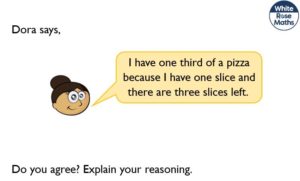
Task 3: science
Our new science topic is all about plants.
1.Watch the following video as an introduction to this learning.
2.Today you are going to be plant detectives. If you have a garden or when you have your daily walk, we want you to have a plant hunt. Look out for different plants and notice where they are. Remember trees are plants too.
3.Record some of your findings – you could even get some photos of the species you spot. Here’s an example plant identification guide to help you to name the plants you find.
Challenge: Can you name the plants we saw on our walk at the weekend?
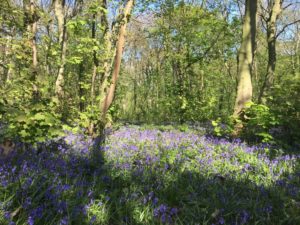
Finally, todays’ alternative activity, that you might want to try out at home, is touch typing. Keyboard skills are important to develop and Dance Mat Typing teaches this in a fun way.
27 April: Home learning
Hello, Year 2. We hope you’ve all enjoyed the mostly sunny weekend and you are ready for a new week of learning.
Firstly, here’s a reminder, from one of Mr Roundtree’s daily whole school news posts, with some tips to support this current home learning:
- try to develop a timetable for the tasks and stick to it – children benefit from the routine and it becomes easier
- build in practical tasks like cooking or planning an online shop so your child can use and apply the skills they have (with this in mind we will be posting some suggestions for this each day this week)
- use different devices to access the tasks if you’ve more than one child, or let them have a go at the same task, but provide extra support for the younger, or additional challenge for the older
- if a task looks too complicated for your child, be flexible – they could access the task set by a teacher in one of the other Sphere schools, or they could access some learning from our menu of home learning resources.
- let your child’s teacher know how they’re doing – it’ll help them to stay engaged if they get some feedback (and our teachers are loving seeing all the great learning that’s coming in – check out their Class News pages!)
- equally, feel free to ask your child’s teacher any questions about the learning
- importantly – be kind to yourself and your child: this is a difficult time for us all, so if they’ve done just two of the tasks, plus some reading (20 minutes would be great), some exercise and some other learning from our menu, then that’s a really productive day!
We really do enjoy seeing what you have been doing at home whether it is home learning or other skills that you are all developing so please share this with us to celebrate on our class news page.
Contact us (carolinetaylor@spherefederation.org and jackiefreeman@spherefederation.org) if there is something you are unsure of or if we can provide any other support for you or your child at this time.
Lexia: We’ve got a few children to congratulate for moving to the next level in Lexia – Betsy, Amelia, Olivia, Saif and Sunny. Well done to you all!
Physical activity: Do you want to practise your gymnastics skills or learn some new skills, as demonstrated here by one of our flexible class gymnasts. Why not have a go at #GymnasticsWithMax. It’s not every day that Max Whitlock, an Olympic gold medalist, can be your teacher!
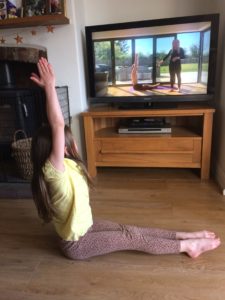
Mindfulness activity: Here’s the chance to explore many different mindfulness activities in the Mindfulness for Children Challenge. Do let us know which ones you find beneficial.
Here are today’s tasks.
Task 1 reading
First of all, here are the answers to the fluency text questions from Friday.
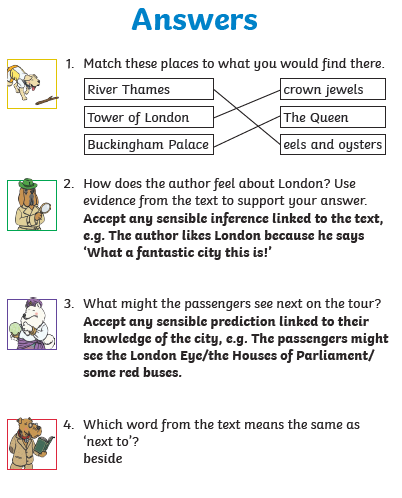 Here’s the fluency text for this week linked to our new science theme, plants. Aim to read this daily so that by the end of the week you will become more fluent when reading it.
Here’s the fluency text for this week linked to our new science theme, plants. Aim to read this daily so that by the end of the week you will become more fluent when reading it.
You can listen to me reading the text here.

1.Read the fluency text.
2.Underline or copy out the words you are not sure of. Try to find out their meanings using a dictionary or online.
3.Tell someone three facts about Venus flytraps.
4.Watch the first part of this video to find out more about this special plant.
Challenge: Can you use your online searching skills to find out another fact about this plant?
Task 2 maths
Warm your maths brain up by playing Karate Cats Maths. There are lots of maths games to choose from but today select the Fractions game.
We’ll continue our learning about fractions today.
White Rose Maths – Week 1 Lesson 5 Find a quarter
1. Watch the video and complete the activity sheet (on a printed copy or write the answers in your learning book).
2.Check your answers – how did you do?
3.Using some objects at home, follow the examples on the video to sort the objects into four equal groups to find a quarter of the total.
4.Think about which numbers this will, and will not, work with to get four equal groups.
Challenge: 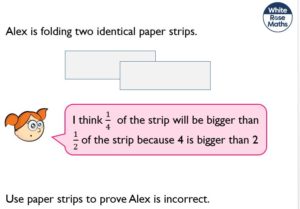
Task 3 writing/spelling
Hopefully you were successful with your spelling test last week.
This week, all the spellings are adverbs where the y has been dropped for an i before adding the suffix ly. In the left column, are the words as adjectives and in the right column are the words after they have been changed to an adverb. On Friday, please test your child on either word.

These spellings have also been added to your child’s Spelling Shed account. Spelling Frame also has spelling games as an alternative online resource (Spelling tiles has some good suffix based activities).
1.As the spellings this week focus on adverbs (words that add more detail to verbs), here’s a BBC Bitesize lesson all about adverbs for you to complete.
Challenge: Can you act out some of the adverbs from your spellings (or any other adverbs) and send us a photo for us to guess the adverb?
Other skills
We know lots of you are learning other skills while you are at home – gardening, cooking, household jobs and much more so here’s a suggestion for doing something a bit different today. How about starting singing?
Have a great day of learning and keep look at our class news page to see some of your fantastic home learning work.
24 April 2020: Home learning
Hello
How did you get on yesterday?
Today, your tasks are reading, maths and writing/spelling.
Task 1
Reading
LO: I understand what I have read.
You will need this week’s fluency text in front of you. There are 4 questions to answer.
 Welcome aboard this tour of London, the capital city of England. Below us, over eight million people are living and working in one of the most exciting cities in the world. The famous River Thames flows through the city and it is full of slimy eels and oysters. Would you like to try some? Beside the Thames, you can see the tower of London, where the crown jewels are kept, and over in the distance is Buckingham Palace, where the Queen and the rest of the royal family live. Underneath the ground, in London, is a railway network known as the ‘tube’. What a fantastic city this this!
Welcome aboard this tour of London, the capital city of England. Below us, over eight million people are living and working in one of the most exciting cities in the world. The famous River Thames flows through the city and it is full of slimy eels and oysters. Would you like to try some? Beside the Thames, you can see the tower of London, where the crown jewels are kept, and over in the distance is Buckingham Palace, where the Queen and the rest of the royal family live. Underneath the ground, in London, is a railway network known as the ‘tube’. What a fantastic city this this!
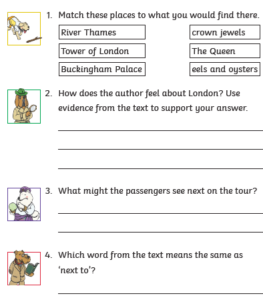
Task 2
Maths
There are two activities for your times tables test. Please complete them by yourself and then ask an adult to mark them for you.
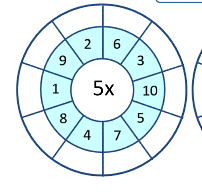
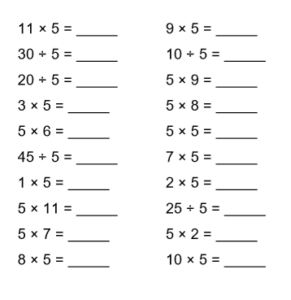
LO: I can recognise a quarter.
This lesson (4) is on the link below.
https://whiterosemaths.com/homelearning/year-2/
Challenges
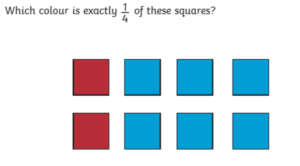
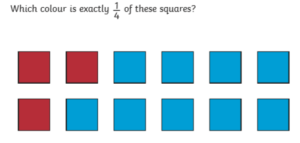
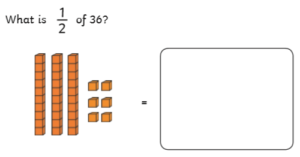 Show your working out.
Show your working out.
Well done!
Take a break.
Task 3
Writing
Spelling – Drop the y for an i.
Please test the children on the coloured words. It often helps to put the word into a sentence.
Lots of babies were in the park.
| lorry | family | party | cherry | city | baby | lady | worry |
| lorries | families | parties | cherries | cities | babies | ladies | worries |
LO: adjectives
You have done a lot of writing this week – well done!
Today, you are going to need your adjective head on!
We are going to think about where bog baby lives.
I wonder what it is like?
Choose one of the settings below and list adjectives to describe it. If you are feeling artistic, then draw the setting into your book and put your adjectives all around it.
Remember to write the noun you are describing.
dripping water
buzzing bees
soft breeze
drifting clouds
Think about using your 5 senses.
- hear
- smell
- see
- taste
- touch
Close your eyes and listen to these woodland sounds.
Well done!
You have worked hard this week. Mrs Freeman and Mrs Taylor are very proud of you all!
23 April 2020: Home learning
Happy Thursday everyone!
We hope that your week is going well. Please remember to check out our class news page on the school website. There are some useful ideas to help with home learning and lots of photos too.
Thank you to all those who are sending in work and (more importantly) keeping in touch. We would like to hear from everyone and, this two way communication, is incredibly important for the children. 
Today’s tasks are geography, maths and writing.
Task 1
Geography
This lesson is on the BBC Bitesize website and fits perfectly with our new topic – Explorers.
Learn about the four countries of the UK and their capital cities.
This lesson includes:
-
a video to help you understand a map of the UK and its four countries
-
descriptions of the seasons and basic geographical terms
-
two practice activities
https://www.bbc.co.uk/bitesize/articles/z42pnrd
Task 2
Maths
Have some fun with your 5 times table!
https://www.youtube.com/watch?v=LZAqhF_2vvs x five tables
LO: arrays and related facts
Children will explore multiplication using arrays. Arrays are sets of objects arranged in rows and columns to make a rectangle. Help your child recognise arrays in the real world. Egg boxes, ice cube trays, and windows in a building can all be arrays.
You could play a game with your child to spot arrays when you are travelling to school or going on a walk. It could also be a good idea to ask your child to build arrays from small objects like grapes or buttons. Can they arrange the objects into different arrays? For example, 6 objects can be made into several different arrays: 
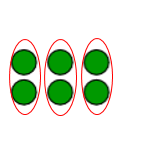
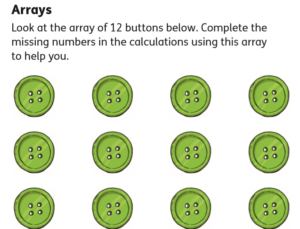

Can you go on an array hunt?
Send your arrays to us.
In Year 2, children will solve multiplication and division problems using the 2, 5, and 10 multiplication tables. They will use the ‘×’, ‘÷’, and ‘=’ symbols to record calculations.
Your child will be introduced to times tables at school. The focus this year is on the 2, 5, and 10 times tables.
Find out what multiplication facts your child already knows, and then see if they can work out more. For example:
Children might know that 5 × 7 = 35.
From this, they can work out related division and multiplication facts: 35 ÷ 7 = 5, 35 ÷ 5 = 7 and 7 x 5 = 35.
Have a go at finding 3 related facts for each of these.
Remember, two multiplication and two division facts.

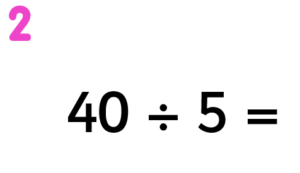




Challenge
Use real five pence pieces to help.
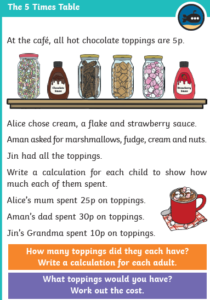
Task 3
Writing
LO: To sequence events in a story.
The Bog Baby
Have a look at the pictures below.
You task is to put them into the correct order by numbering them.
In your book, write the number of the picture and then a sentence of what is happening in that part of the story. You only need to write one sentence for each picture.
If you’d like to draw your own sketches to go with your sentences then they need to match the ones below.
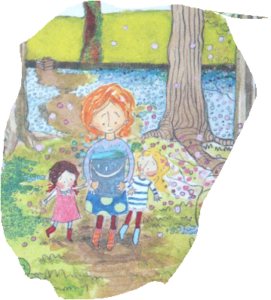
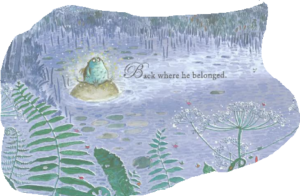
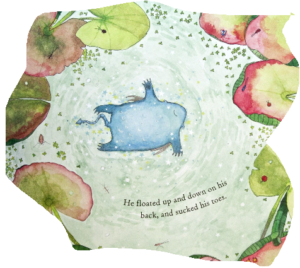
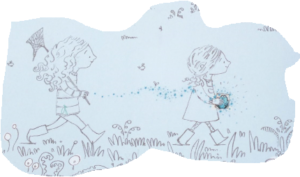
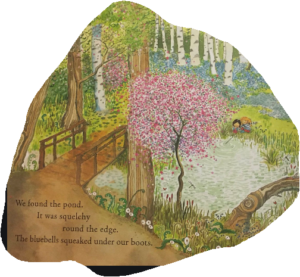
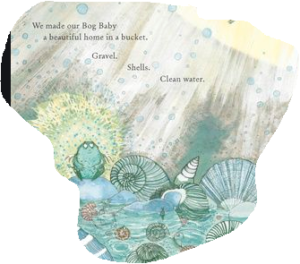
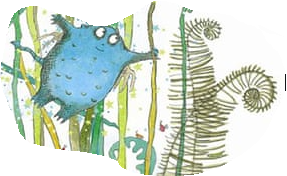
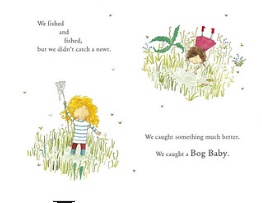
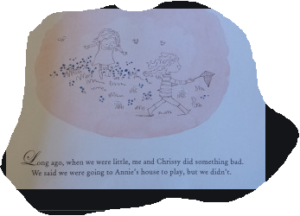

22 April 2020: Home learning
Good morning everyone!
Here are the answers to the Cats activity.
- How fast can a cat run? up to 30 miles per hour
- True or false? Cats that live indoors are safer than cats that go outside? True
- True or false? A Sphynx cat has lots of fur? False
- What might a cat do if it feels scared? hiss
- A long time ago, who were cats were very special to? ancient people in China and Egypt
Your tasks today are maths, writing and reading.
Task 1
Maths
Use your hundred square if you need to. Do you notice any patterns when you cross 100?
Count in 10s from 30 – 170
Count in tens from 190 – 60
Play ping pong tennis using your 5 times tables. (each person takes it in turns) How fast can you go?
Lesson 2 and 3
LO: To recognise and find a half.
There are 2 lessons on the White Rose site that cover halves. This is the scheme we use in school and the children are very used to it. Over the rest of this week, the children need to complete these two lessons – they don’t have to both be done today.
https://whiterosemaths.com/homelearning/year-2/
Following those lessons, I have provided some challenges to further the children’s understanding of equal parts and halves. Again, spread these out over the week.
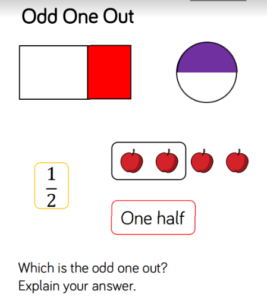
Equal or unequal?

True or false?
All of these are split into equal parts.

Can you draw them and make sure the parts are equal?
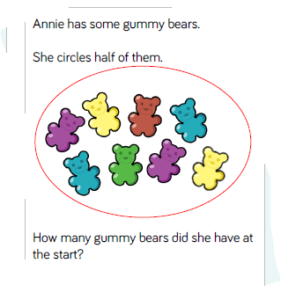
Task 2a
Reread the fluency text for this week. There will be some questions to answer on Friday.
A Helicopter Tour Over London
Welcome aboard this tour of London, the capital city of England. Below us, over eight million people are living and working in one of the most exciting cities in the world. The famous River Thames flows through the city and it is full of slimy eels and oysters. Would you like to try some? Beside the Thames, you can see the tower of London, where the crown jewels are kept, and over in the distance is Buckingham Palace, where the Queen and the rest of the royal family live. Underneath the ground, in London, is a railway network known as the ‘tube’. What a fantastic city this is!
Task 2b
Our Living and Learning statement this week is:
I recognise emotions in myself and others.
Recognising emotions is an important first step in helping us manage our feelings. For example, it’s ok to feel angry, as long as we try to manage it in a way that doesn’t negatively affect other people. It’s great to feel proud as long as it doesn’t lead to showing off.
Read the poem below.
There are two activities linked to the poem.
- Talk about favourite words and phrases.
- Can you find a word, in the poem, that follows this week’s spelling rule?
Challenge
Make a list of things that make you feel cheerful, sad, angry, frightened and calm. Why do you think I have coloured some of the emotions? What colours would you choose for frightened and calm?
TAKE A BREAK
Writing
Did you enjoy the beginning of the story?
I wonder if your predictions were correct?
Would you like to hear the rest?
Follow the story using yesterday’s link.
Sit back, relax and listen.
This is what she saw!
Lots of bog babies!
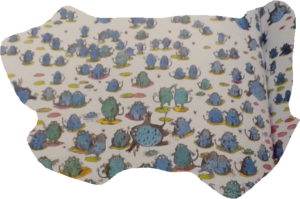
Yesterday, you wrote lots of adjectives about the bog baby.
Today, you are going to write a character description using some of those describing words.
Let’s remember some MUST DOs!
- capital letters
- punctuation at the end of a sentence
- spaces between words
- clear and neat handwriting
I have written a couple of sentences to help you .
The bog baby is light blue.
The creature has small wings.
Challenge
Join two sentences together by using a conjunction.
The bog baby is light blue and he has small wings.
Good work everyone!
21 April 2020: Home Learning
Hello there!
Hope that everything went well with yesterday’s learning.
Here are your tasks for today.
Writing
Lesson objective: To predict events in a story and infer what might happen next. 
The Bog Baby by Jeanne Willis
This is the text we are going to be reading.
Discuss the children’s first thoughts about what the story/ characters / setting could be.
Have you heard of a bog before? (Clarify what a
bog is using images and an online / dictionary definition)
What might a bog baby be? What does the front cover lead you to imagine will be inside the book?
What other characters could be involved in this story?
What makes you think this?
Share some ideas about potential plot, setting and characters.
Challenge children to explain the reasons for their ideas.
Listen to and read the first seven pages (2.12 minutes, up to the page where it describes the bog baby). https://www.youtube.com/watch?v=nVuH4BdVQOQ
What do you think will happen next?
What kind of character is the bog baby?
Therefore,what might it do?
What could happen if the children pick it up?
Make a list of the adjectives the author has used to describe the bog baby.
Now, use your prediction skills based on what you have read up to page 7.
Copy and complete these sentence stems using your predicting skills.
If the children pick up the bog baby ……………………………..
I think that …………………………………………..
The bog baby is …………………………………………….
Challenge 1
Draw a picture of the bog baby and add ten new adjectives to describe the creature.
Challenge 2
Put your adjectives into sentences like this one. Remember the comma if you are using more than one adjective in a list. We have done this in class before.
The blue creature has sharp, pointy toenails.
Task 2 Reading
LO: I can retrieve.
Read the text below and answer the fact finding questions.
All about cats
There are so many different breeds of cats from very long-haired cats to the hairless Sphinx cat. They were domesticated, or tamed, to be friendly with humans in Egypt more than 5,000 years ago! They are fun pets to have and will soon become a part of the family.
Persian cat – a very furry breed 
Cat Facts!
• Cats can run up to 30 miles per hour for short distances.
• Cats were considered sacred to the ancient people in China and Egypt.
• Cats do not have a rigid collarbone like many mammals. This is why they are able to squeeze through small spaces.
• Cats can see much better than people in low light.
How long do cats live?
Cats who live indoors are much safer than cats who are allowed to go outside as well. If a cat is well looked after and has regular check-ups then it can live to be 20 years or even older.
How do cats communicate?
Cats communicate in lots of different ways. They purr when they are feeling happy and content and hiss when they are feeling scared or threatened. Cats meow to tell us if they are hungry or want to go out and to communicate with other cats.
Questions
- How fast can a cat run?
- True or false? Cats that live indoors are safer than cats that go outside?
- True or false? A Sphynx cat has lots of fur?
- What might a cat do if it feels scared?
- A long time ago, who were cats were very special to?
Challenge Can you write two of your own fact finding questions? You can research more about cats if you like.
Task 3 Science
LO: Why is handwashing so important? 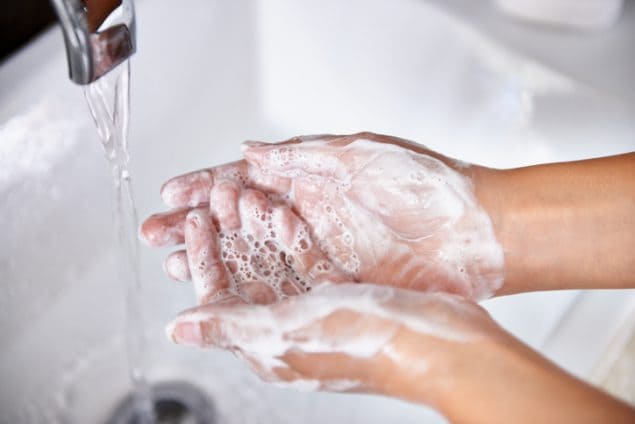
The advice being by health authorities is to wash your hands with soap and warm water for at least 20 seconds, roughly the same amount of time it takes to sing “Happy Birthday” twice. In order to ensure that children understand how vital it is that they practise good hand hygiene, a simple, fascinating trick has been developed using soap, pepper and water.
Mrs Freeman tried the experiment at home.

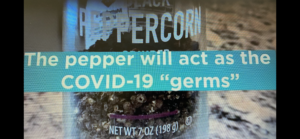
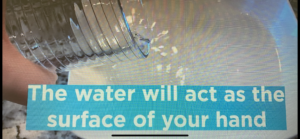
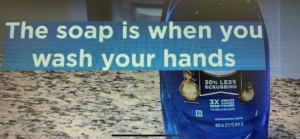

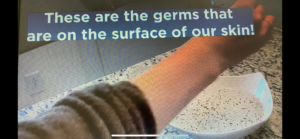
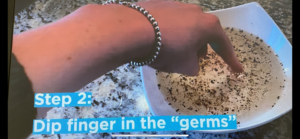
What do you think will happen? Explain why you think this?
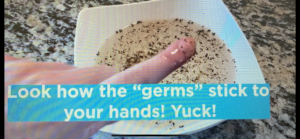
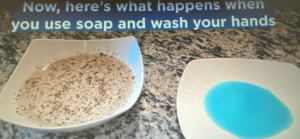
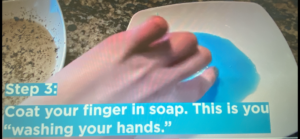
Mrs Freeman then puts her finger in a bowl of soap, before dipping it back into the bowl of pepper. Will the same thing happen with the pepper?
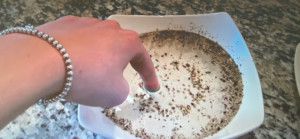
Explain what has happened.
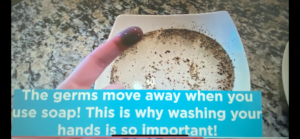
What happened?
The pepper rapidly moves away from the soap-covered finger.
Your turn
In your books write and draw pictures of this experiment in the correct order. You can number each step and make sure you label your pictures.
Answer these questions using full sentences.
- What was the pepper for?
- Did the soap make any difference? Explain your answer.
- Did you notice the pepper move? Why do you think this happened?
Challenge With the help of an adult, can you complete the experiment at home. If not, you can watch it here. Can you think of 3 questions you would like to know about the experiment? https://www.bbc.co.uk/cbeebies/watch/germs-experiment
20 April 2020: Home learning
Good morning Year 2!
We hope that you have enjoyed the Easter break and are ready to get back to some home learning tasks. We will continue with the same structure as before. PLEASE send us your completed tasks as we would like to see how you are all doing. So far, we have been incredibly impressed by all your efforts (parents too) and we are very proud of everyone.
We are all missing each other and school life. Just keep going – you’re doing a great job! 
Please contact us if there are any queries or if you just want to touch base. We will aim to reply the same day.
carolinetaylor@spherefederation.org
jackiefreeman@spherefederation.org
To help with homeschooling, BBC Bitesize Daily Lessons launches on Monday 20 April. We are going to look through these lessons with a view to using some of them. We will keep you posted! https://www.bbc.co.uk/bitesize/dailylessons
Let’s get going!
Here are your home learning tasks for today.
There are some optional challenges too. We will also give you a suggested physical activity and mindfulness activity to help you to keep physically and mentally healthy.
Physical activity: Why not start your day by joining in with the free live PE with Joe video for kids. These sessions will be running daily at 9am.
Mindfulness Matters Activity (we usually do these straight after lunch but it can be included at any point in the day): OK breathing – Make an ‘ok’ sign on your tummy and slowly breathe in and out. This sign is to represent that it is ok to feel different emotions. No emotions are bad. Emotions change and you won’t feel like that forever. Play some relaxing music just like we do in school. https://www.youtube.com/watch?v=WUXEeAXywCY 
Task 1 Reading
Here’s the fluency text for this week. The children are used to having these texts weekly in class and they are aimed at developing the children’s fluency when reading.
A Helicopter Tour of London

Before you read the text, study the picture. What can you see? Are there any places that you have been to?
1. Read the non-fiction text below based on a helicopter ride over London.
2. Copy out words you are not sure of. Try to find out some of their meanings using a dictionary text or online.
3. Reread the text and record two new facts, in full sentences, you have found out. I have found out that ……………………… I didn’t know that ………………………….. Welcome aboard this tour of London, the capital city of England. Below us, over eight million people are living and working in one of the most exciting cities in the world. The famous River Thames flows through the city and it is full of slimy eels and oysters. Would you like to try some? Beside the Thames, you can see the tower of London, where the crown jewels are kept, and over in the distance is Buckingham Palace, where the Queen and the rest of the royal family live. Underneath the ground, in London, is a railway network known as the ‘tube’. What a fantastic city this this! Challenge: Can you find and correct my mistakes? london is the capital sity of England and the queen lives in Buckingham palace
Task 2 Maths
To start with, chant your 5 times tables to 12 x 5 = 60 Can you do it backwards? Fractions
LO: I can make equal parts.
Notes Children explore making and recognising equal and unequal parts. They should do this using both real life objects and pictorial representations of a variety of shapes and quantities. Below are some helpful questions to ask your child regularly. What is the whole? What are the parts? How many parts is the object/quantity split into? Are the parts equal? How do you know? Do equal parts always look the same?
Next, using a piece of A4 paper, how many ways can you fold it to make equal parts? Try folding in half first and remember, the parts must be equal.
Next, follow this link and complete the activity.
https://whiterosemaths.com/homelearning/year-2/ Week 1 Lesson 1 Make equal parts There is a short video and a worksheet. When you have finished you can mark your own work using the answers provided. Good luck!
Challenge Can you split the teddies into three equal groups?  Can you split the teddies into three unequal groups?
Can you split the teddies into three unequal groups?
How many ways can you split the teddies into equal parts?
Playtime Give yourself a break! You are working hard. ![Sunglasses Emoji [Free Download Cool Emoji] | Cool emoji, Ios ...](https://i.pinimg.com/236x/69/01/88/690188487c670d01145817bf9c4666a3.jpg)
Task 3 Writing The spelling rule this week is drop the y for an i. Each word is a noun. When making the noun plural (more than one) you need to follow the rule.
Don’t forget to spend some time on Spelling Shed to practise these words. Parents/carers – if possible, please test your children on these words at the end of the week.
| lorry | family | party | cherry | city | baby | lady | worry |
| lorries | families | parties | cherries | cities | babies | ladies | worries |
Write 5 crazy sentences using some of your spelling words. The crazier the better!
Can you help me? I think I’ve made a few mistakes
Write out my sentence in your BEST handwriting and underline the corrections. Mrs Freeman’s silly sentence. The cheeky babys slowly drove the lorrys.
Challenge1: Test me! Using your spellings, can you think of an incorrect sentence to send to me? Will it be correct when I send it back?
Challenge 2: Draw a picture for each spelling and label it. You could draw one teddy or you could draw five teddies.
WELL DONE YEAR TWO!
Easter home learning
As it’s the Easter holidays, we’re taking a break from the daily home learning tasks. Instead, here are a range of activities that you might like to try over the two weeks. The tasks are creative and are designed to allow children the opportunity to enjoy some different learning, perhaps alongside family members. A few key points…
- The list will be the same across year groups, meaning if you’ve more than one child, they might work on it together in some way.
- Some of the tasks can take a bit longer, like a mini-project, and others match Creative homework tasks.
- You can encourage your child to do some or all of the activities – they’re all optional.
- During this time, you can still email your child’s class teacher about the home learning, although they may not respond as quickly as they have been doing.
- Teachers will return to daily home learning tasks on Monday 20 April.
Art Attack
Andy Goldsworthy is a British artist who creates art using things he can find in nature. The artwork shown here was created using different leaf types and creating a pattern. He creates his art outside as he likes the fact that it’s temporary and won’t be around for long!

Create your own piece of art using different materials you can find around your home or in the garden. You could even create some ‘rubbish art’ using only items that have been used and would be thrown away or recycled.
Take some photographs and send them to your teachers.
Hunted
Create your own treasure hunt with cryptic clues for your family members to complete. Make the clues as tricky as you can. What could be the prize for the winning hunter? Maybe, this could tie in with a family Easter egg hunt.

Secret Message
Create your own invisible ink.

Using a spoon, mix water and lemon juice. Dip a cotton bud into the mixture and write a message onto the white paper. Wait for the juice to dry so your message becomes completely invisible. When you are ready to read your secret message or show it to someone else, heat the paper by holding it close to a light bulb – be careful: maybe ask an adult to do this part. As the mixture heats up, your message should reappear so people can read it again.
Alternatively, the same result can be achieved by writing the message on white paper with a white candle or crayon. Then, paint over the message using coloured paint to reveal the writing.
For a challenge, come up with your own way of making invisible ink and try it out on your family.
‘Board’ Silly
Design and create your own board game for you and your family to play – perhaps play some existing board games first to research ideas.
There are a few key things to think about:
- What will your theme be?
- Will there be any ‘snakes’ or ‘ladders’ style elements?
- Do you need to make a dice using a cube net?
- Will there be any extra challenges or forfeits if you land on certain numbers?
Enjoy your games!

Extreme Reading
Reading is a great way to relax and learn about the world around us; also, reading regularly can help us to stay happy and healthy. This challenge is all about making reading even more fun. We’d love to know how many places you can read in. Try to read in a different place each day. Take photos or draw a picture of you doing it, if you can.
You could read…
- in a den that you’ve made
- up a tree
- under the bed/table
- to the dog/cat
- looking in a mirror
Stay safe and send your class teacher some pictures.
Come Dine/Bake with Me
Have your very own family ‘Come Dine With Me’ experience. Each family member could cook a meal or a course and then you must score each other out of ten. Similarly, each family member could bake something and you could all have a tasting after where you give points (like on Great British Bake Off). You don’t have to work on your own – you could help an adult.
Who will win?


Den Building
Who doesn’t love making a den? Either in your house, or in your garden, spend time building a den and enjoy some time relaxing in it – if there’s more than one of you, you could make it a competition. Use whatever materials you can find and see how creative you can get.
You could also read in it and combine this challenge with the ‘Extreme Reading’ one.

Get Ya Body Movin’
Staying physically active plays a crucial role in keeping us happy and healthy; it boosts our mental and emotional health, too. This task has three options – all of which are designed to get people moving during the holidays. You could include your family as well.
Option A: Create your own ‘Ninja Warrior’ style challenges in the garden or your house. Try to include a range of activities that include jumping, balancing, stretching, climbing and, if you’re feeling brave, water. The adults in your family will love a water challenge.
Option B: Create your own Joe Wicks style workout video. You could do it with your family or film yourself and send it to your friends. You might like to check out Joe Wicks’ YouTube channel for inspiration.
Option C: Choose your favourite song and create your own ‘Wake Up Shake Up’ (WUSU) dance routine. Again, you could lead this for your family to join in or film yourself and send it to friends or other family members. This’ll be a great way to get everyone dancing.





